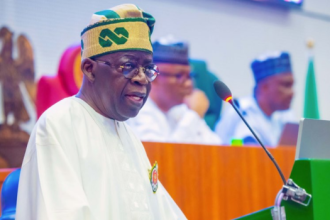So basically, let’s get this straight. Bitcoin, cryptocurrency, blockchain, web3 are all great ideas that have benefits to the world as a whole. Innovations that can potentially change the world, disrupt how we interact with society, our financial system, and the world as we know it.
However, as pervasive as cryptocurrency is, regions like Africa require unique strategies to effectively reach the target audience. Some of the reasons for this include income levels, macro challenges in the region, access to technology and regulation (which at this point is a more global discussion than regional).
But before we do a deep dive into certain strategies that work in Africa. We have to understand the most pertinent use-cases for cryptocurrency for Africans. The key use-cases are; remittances, access to FX, saving in stablecoin and earning higher interest, multiplying net-worth, financial inclusion and greed.
Typically the most successful platforms that offer these services as a whole or in efficient singularities win the market. Data from Chainanalysis showed that the crypto market in Africa grew by over $105 billion between 2020 and 2021.
Centralised exchanges are critical to this growth and accelerating adoption rate. Platforms like Binance, KuCoin, OKEx, and now FTX have had relevant success in the African market alongside some local competition. In truth, it is not far reaching to understand why centralised exchanges are leading the adoption rate for crypto in Africa and it can be drilled down to trust and level of education.
For many Africans, operating on a totally decentralised exchange defies inherent cultural perception of what money is and it will be hard for them to commit limited hard-earned cash to these platforms. However, centralised exchanges offer something relatable, very similar to banks and other traditional financial institutions. A presence they can hold accountable if something goes wrong with their funds.
If we ignore the other complexities of cryptocurrency which can be a hindrance, Africans are willing to adopt cryptocurrency in droves. Africa is the second largest continent in the world with about 1.3 billion people, and a sizeable amount are underbanked and have little or no access to financial services (it should be the market to go to).
Anyone who says that winning the market in Africa is easy will be selling a lie. The terrain is different and legacy tactics used across other regions do not necessarily apply, user acquisitions take longer to actualise and one keyword a marketing team will need is PATIENCE.
Platforms and exchanges that try short-term experimental entry tactics with high user expectations from the jump are usually gone as soon as they come-in. Perhaps for such platforms, it makes sense to have a consultant who they work with to provide general publicity, press releases, etc but no boots on the ground.
After discussing with industry experts, and having worked in various capacities for a number of exchanges, these are the best win-the-market strategies to conjure up.
Training and Education
Possibly the most simplistic and most effective strategy to win is through training. Financial education is very germane for a population which has a literacy level of just 70% lagging behind other continents. When it comes to money Africans are quite sophisticated, but with income levels it is a lot harder to part with this disposable income.
We also need to look at how Africans perceive learning, Africans prefer structured learning and a platforms user acquisitions and deposit drive have to be tied towards education. For example, incentivizing tutors to teach students on their platforms and how to get around is a working model to explore.
Affiliate Marketing
The Affiliate Marketing approach is somewhat conventional and CEXs already have well-established affiliate programs and mechanisms that enable the affiliate to share income with the exchange. The affiliate strategy is particularly for exchanges who provide trading and derivatives services to clients. Typically exchanges make money from commissions (around 0.01%). As an example, if Binance has a volume of $71b, the company has made $710m from trade commissions.
You might be wondering where the affiliate comes in here? So Binance decides to engage affiliates who are responsible for bringing volume on the exchange. Typically there is usually a revenue share between the affiliate and the exchange around 15% – 35%.
It is typical to get people who send signals to a large trading community to partner if an exchange wants to explore this type of marketing in Africa.
Relatable Product Content
Another key component to an exchanges marketing approach, and we have seen a rise of this in the past 24-36 months in Africa is the efficiency of content marketing.
Platforms operating in the fintech space like Cowrywise and PiggyVest have used this to great success. Sending timely email feeds or app push notifications that are relatable to users.
For example, a popular valentine slang tied towards cryptocurrency can be attractive. Imagine a message like “No better way to celebrate valentine than a $100 BTC to your loved one…”. Investing.com also has tremendously relatable memes for finance content that can be adopted. These types of messaging stick to the audience. Having a content team to go with digital marketing, SEO, etc is critical for this approach.
Micro-Influencers & KOLs
There are key individuals in the African region that are thought leaders who drive opinions and adoption of cryptocurrency. They operate largely on twitter, telegram and discord. YouTube is huge in other markets but is still a growing market here in Africa, although there are some key standout figures an exchange can consider.
Investment & Project Listings
The region is rewarding to those who invest the most. Outside of giving crypto services to users in Africa. Exchanges need to provide opportunities for African projects to get on their platforms in the form of IEOs and other types of partnerships with local projects can help fortify market share in Africa.
Although there are not enough precedents to test the validity of this approach, some centralised exchanges have dabbled in this. The logic to this approach is to drive volume and liquidity from a project listing to the exchange.
Event Partnerships
Event partnerships help in some way for brand visibility and can help to drive market share. From experience it is not so much tied towards the end user acquisition but it helps to enforce brand attachment. Twitter Spaces, Clubhouse conversations and live-events are essential for talkability and brand recognition.
Big Splash Sponsorship
This type of marketing approach is more suited at the end of the lifecycle and when the brand is going towards mass market adoption. In global CEXs regions are in some form of competition with each other on who can make a big splash in terms of sponsorships.
Signing a region’s biggest athlete, music star, sports team, etc always helps in adoption. The logic behind this is simple, these personalities have millions of followers. If the exchange can capture 0.02 of a celebrity with a total of 10 million followers, the exchange has effectively onboarded 200,000 users. Sometimes the approach can be faulty, but the numbers around it (providing it is successful) is hard to argue.
Other Important Factors
Fiat OnRamp & OffRamp: This is the ability of an exchange to enable users to use local currency to buy crypto and sell crypto to local currency. Various ways to achieve this, most popular in this region is the peer-to-peer method, but there are other more effective ways.
Cost Per Acquisition: A local marketing team has to have a clear CPA to operate with as a benchmark for all costs and expenses to incur to win the market.












